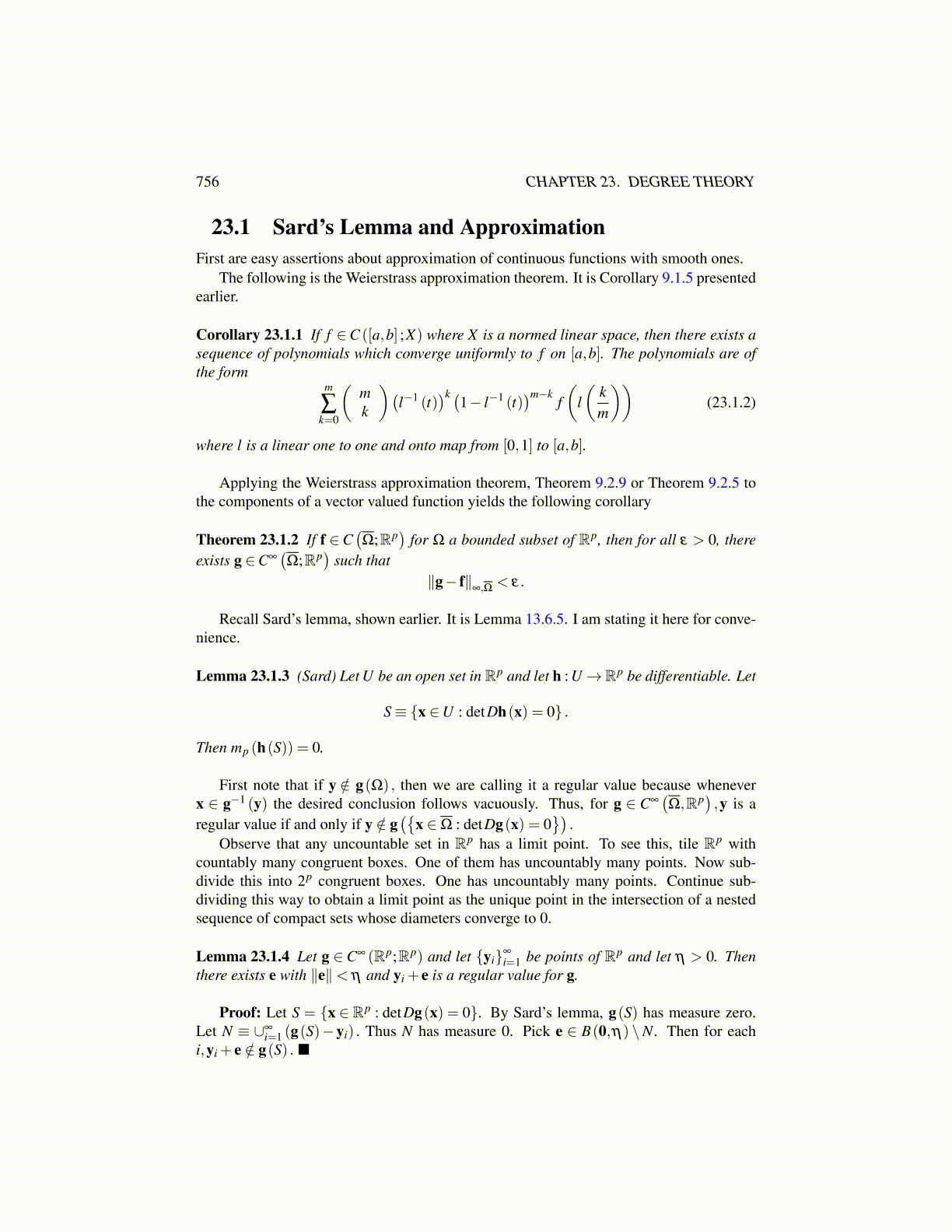
756 CHAPTER 23. DEGREE THEORY
23.1 Sard’s Lemma and ApproximationFirst are easy assertions about approximation of continuous functions with smooth ones.
The following is the Weierstrass approximation theorem. It is Corollary 9.1.5 presentedearlier.
Corollary 23.1.1 If f ∈C ([a,b] ;X) where X is a normed linear space, then there exists asequence of polynomials which converge uniformly to f on [a,b]. The polynomials are ofthe form
m
∑k=0
(mk
)(l−1 (t)
)k (1− l−1 (t)
)m−kf(
l(
km
))(23.1.2)
where l is a linear one to one and onto map from [0,1] to [a,b].
Applying the Weierstrass approximation theorem, Theorem 9.2.9 or Theorem 9.2.5 tothe components of a vector valued function yields the following corollary
Theorem 23.1.2 If f ∈C(Ω;Rp
)for Ω a bounded subset of Rp, then for all ε > 0, there
exists g ∈C∞(Ω;Rp
)such that
∥g− f∥∞,Ω < ε.
Recall Sard’s lemma, shown earlier. It is Lemma 13.6.5. I am stating it here for conve-nience.
Lemma 23.1.3 (Sard) Let U be an open set in Rp and let h : U→Rp be differentiable. Let
S≡ {x ∈U : detDh(x) = 0} .
Then mp (h(S)) = 0.
First note that if y /∈ g(Ω) , then we are calling it a regular value because wheneverx ∈ g−1 (y) the desired conclusion follows vacuously. Thus, for g ∈ C∞
(Ω,Rp
),y is a
regular value if and only if y /∈ g({
x ∈Ω : detDg(x) = 0})
.
Observe that any uncountable set in Rp has a limit point. To see this, tile Rp withcountably many congruent boxes. One of them has uncountably many points. Now sub-divide this into 2p congruent boxes. One has uncountably many points. Continue sub-dividing this way to obtain a limit point as the unique point in the intersection of a nestedsequence of compact sets whose diameters converge to 0.
Lemma 23.1.4 Let g ∈C∞ (Rp;Rp) and let {yi}∞
i=1 be points of Rp and let η > 0. Thenthere exists e with ∥e∥< η and yi + e is a regular value for g.
Proof: Let S = {x ∈ Rp : detDg(x) = 0}. By Sard’s lemma, g(S) has measure zero.Let N ≡ ∪∞
i=1 (g(S)−yi) . Thus N has measure 0. Pick e ∈ B(0,η) \N. Then for eachi,yi + e /∈ g(S) .